With so much discussion about knowledge-rich curricula and explicit instruction, it’s important not to forget about other elements that contribute to an effective learning environment. Physical movement is one such critical ingredient.
As humans, we are hardwired to move our bodies. So it makes sense that physical and multi-sensory activities instantly appeal to young learners, boosting their engagement and helping them to learn effectively.
In this blog, we'll look at why embodied learning is important and explore how it works. We’ll also offer some fuss-free tips to help you integrate movement into your teaching practice and share some PlanBee resources which can support you.
What is active learning?
Let’s define, right upfront, what we mean by active or embodied learning. Embodied learning relates to teaching strategies which engage and make use of movement and the body to support effective learning. This means that it can take many forms. In fact, lots of standard teaching practices make use of enacted or embodied learning in EYFS and KS1, especially in the teaching of reading and writing (such as tracing letters or through gestured storytelling strategies like Talk for Writing).
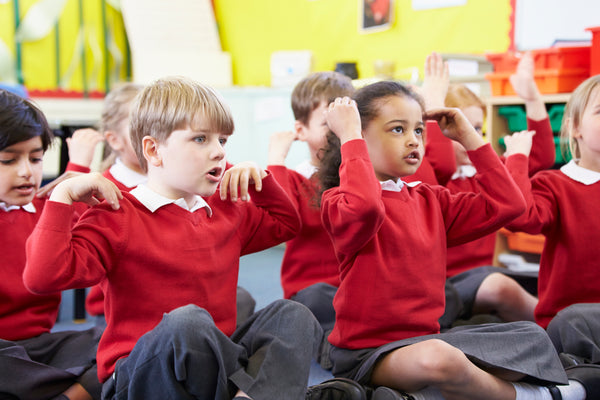
How does active learning support children?
Active learning, when thoughtfully designed, can have a positive impact on children’s cognitive and holistic development. Key benefits include:
Cognitive development
Movement stimulates brain function, improving both the brain’s processing speed and strengthening memory. Using physical gestures and movement also helps children to build better mental representations (also known as schema). By offering children opportunities for imaginative play and physical movement we enable children to sharpen their abilities to create, adapt and refine their mental representations and build new connections.
When children engage in physical learning activities, such as acting out stories or using gestures to represent concepts, they embody the information. This enhances their understanding of the material at hand. For example, it’s easier to understand the role of a firefighter if you have spent time acting out the duties they perform in different scenarios. It’s easier to absorb and retain abstract concepts, like pneumatics, if you have spent time imagining that you and your friends are air molecules, trapped in a syringe, that get closer and closer together when the plunger is pressed and the space in the syringe gets smaller and smaller.
Engagement and retention
Research, from organisations like the Education Endowment Foundation (EEF), suggests that incorporating physical or embodied learning can boost children’s engagement and overall attainment. That makes sense as children naturally love to move. Carousel-style activities, treasure hunts and orienteering activities always create a buzz. That’s because they instantly involve children in the learning process, which promotes deeper understanding and better retention of the learning material compared to receiving information through passive instruction.
Furthermore, physical movement stimulates regions of the brain involved in learning and memory, including the hippocampus, which plays a key role in the formation and retrieval of long-term memories. So, just as using movement can support children to process and understand new information, it can also help them retrieve that information from their long-term memory.
Mental and physical benefits
Incorporating regular movement into the classroom promotes a positive and dynamic learning environment. It can also help your young learners improve their physical self-awareness (known as proprioception), balance and muscle tone - all of which are important in growing bodies.
Did you know that when children experience stress or anxiety, this can interfere with the brain’s learning and memory processes? Physical activity can help to reduce stress and anxiety levels and support emotional regulation in general. Moreover, movement can help alleviate restlessness and improve focus, contributing to better overall wellbeing in the classroom. This makes active or embodied learning strategies perfect for those tricky slots just before and after lunch when energies dip.
Inclusive provision
While all children can benefit from regular movement within our busy teaching timetables, this approach can be especially beneficial for SEND and neurodivergent children. For example, engaging in role-playing activities where they act out social scenarios can provide a safe and structured environment for practising social interactions. By engaging in hands-on, multi-sensory shape-sorting activities, children can better integrate sensory information and enhance their understanding of abstract geometry concepts.
Active learning across KS1 and KS2
Don’t assume that embodied learning is just for KS1. Using gestures to represent punctuation works just as well for inverted commas in LSK2 and colons and semi-colons for KS2 as it does for fullstops and commas in KS1. It’s even better if children create the gestures for themselves!
You could easily adapt our Year 3 The Snowman or Year 5 1001 Arabian Nights Schemes of Work to incorporate physical punctuation.
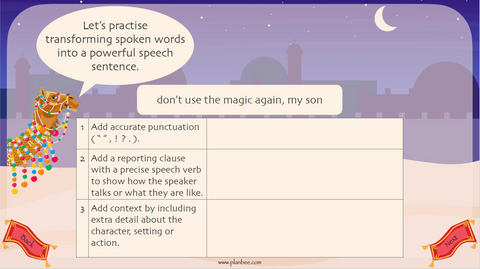
Embodied learning is not just for English
Similarly, opportunities for enacted learning extend way beyond reading and writing.
In Maths, creating number lines on the playground in chalk is very effective for teaching addition and subtraction in KS1 and for fractions, decimals and negative numbers in KS2. Using masking tape to set up a place value grid and jumping between the columns can work just as well to reinforce children’s understanding of powers of ten and decimals and jumping around a large number square (or creating your own on the playground) can reinforce skip counting, from the 2s, 5s and 10s in KS1 to the times tables in LKS2.
Science is another great subject for embodied learning. Children’s understanding of scientific processes can be greatly improved if they create living diagrams for life cycles of plants and animals, states of matter, the water cycle or the circulatory system. Here, children can embody a seed germinating, a particle changing state, a water molecule becoming a raindrop or a blood cell passing through the lungs. The last of these works well if the children hold and flip a double-sided blue/red counter to demonstrate deoxygenated blood becoming oxygenated as it passes through the lungs.
For more ideas, see our Year 3/4 What Do Scientists Do? scheme of work which encourages children to conduct scientific investigations using both active brains and bodies!

Ideas for active learning
There are many different ways to incorporate physical activity and movement into your learning. The trick is to make sure the activity supports the learning intention rather than distracts from it. You should take care also to reduce cognitive load rather than increase it. So, why not take a look at your planning for next term and see where you could build in some of these ideas.
Knowledge-rich learning experiences
If you have a lesson with a particularly knowledge-rich focus and you want children to actively engage with the material, enable children to share and exchange information or ask and answer questions as they move around the classroom. You’ll find children are much more engaged and absorb much more than they would if left to read the information independently.
You’ll find this type of movement in many of our schemes of work, including the Teach me, Tell me activity in our Year 2 Florence Nightingale scheme or the Walk and Talk activity from our Year 3/4 World War Two Scheme of Work where children share facts about many different people who contributed to Britain’s war effort.
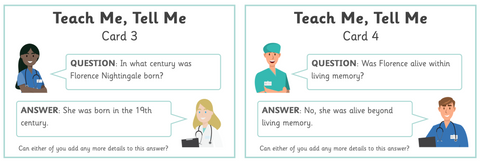
Boost conceptual understanding
If you want an engaging way for children to rehearse and refine their understanding of a concept, try concentric circles. Stand your children in two equal groups, facing each other in concentric circles. Ask the children in the outer circle to explain a concept, event, or process to their partner from the inner circle. Then, rotate just one circle to switch partners and repeat. This offers children plenty of opportunity to rehearse and refine their understanding. It’s great for developing oracy, too.
You can find this activity in our Year 1/2 History Toys Past and Present Scheme of Work.
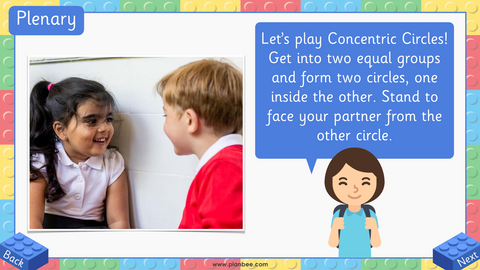
Strengthen skills-based learning
This is where embodied learning really comes into its own. A brilliant example would be to set up an archaeological dig in a raised bed or patch of unloved grass. Grid up the area using string and bury flint tools (or other artefacts linked to the time period you are studying). Then, ask children to record the coordinates of where they found the artefacts and to describe what they found, just like an archaeologist would!
Alternatively, develop children’s chronological understanding by asking them to form human timelines physically. Here the movement helps to conceptualise the passing of time and also offers an opportunity to reinforce relevant language as you go (e.g. earliest, latest, most recent, now and then etc). This activity lends itself well to rehearsal, with children holding different events and dates each time the activity is repeated.
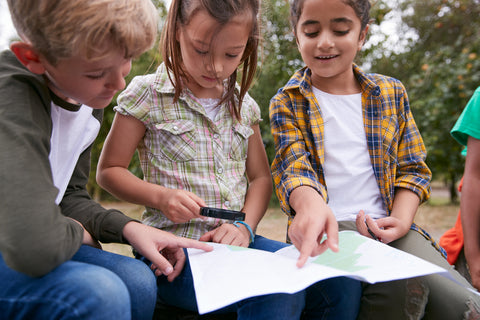
To develop children’s spatial awareness in KS1, enlarge maps so they are big enough for children to physically move to different locations. For KS2, use the school grounds or local ordnance survey maps to plan a local orienteering session for your class. You could also bring cartography to life by asking your class to create a to-scale map of the round city of Baghdad using just a piece of string, a metre stick and some chalk. Being outside will instantly give children a better sense of scale.
You can find examples of these activities in our Year 1/2 History Toys Past and Present and our Year 5/6 Early Islamic Civilisation Topic.

Adapt your questioning
For a quick and effective way to build movement into your learning, play Four Corners.
Pose a question and ask children to move to demonstrate their response. You can allocate different possible answers to each corner of your classroom. Make sure to explore why children move positions before they settle on their answer. You can use the same principle for any scaled question, with children moving to one side of the room if they strongly agree or to the other if they strongly disagree.
You can find some great examples of embodied questioning in our Year 3/4 Anglo-Saxons, Picts and Scots scheme of work.
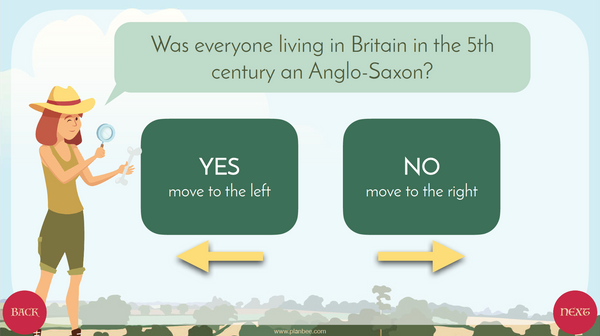
Awaken the senses
Sensory stations are a fantastic way to hack engagement and memory-making for your brains! Use tea tasting to support children’s use of precise language for the appearance, aromas and flavour of tea with our Year 4 scheme Cloud Tea Monkeys or set up a stall from an Arabian souk so children can see, touch, smell and taste items - like incense, fruits and spices - to inform their descriptive writing alongside our Year 5 1001 Arabian Nights scheme.

Harness emotions
Research suggests that experiences connected with emotions create longer-lasting and clearer memories. So, it is understandable that activities which engage children emotionally can strengthen their memories too. Tapping into emotions also helps children to develop empathy and understanding.
Using role-play is an excellent way for children to actively build and adapt their mental representations of the world and develop empathy, too. Through role-play, children can immerse themselves in a historical time period, connect with a character’s feelings and motivations or rehearse responses to a range of social situations - from practising making a 999 call to using scripts to respond to discrimination in their community. The latter is a crucial part of our PSHE curriculum - see Year 2 Asking for Help or Year 4 My Diverse Community.
Take it outside
Outdoor learning isn't just about enjoying the fresh air; it's a powerful opportunity for our children to move, regulate and express themselves away from the confines of the classroom. Studies show that children who engage in outdoor learning have improved attention and concentration in the classroom. It's also a brilliant way to encourage movement and develop gross motor skills! Plus, nature is full of complex geometric shapes, called fractals, which are proven to boost our wellbeing and reduce feelings of stress or anxiety.
Many science investigations lend themselves to outdoor learning - from weather observations to fitness tests! Simply take your equipment outside (bonus: less clearing up to do).
TL:DR
Integrating movement into learning experiences can support children to process and understand their learning material more effectively. It can also help them to retain and retrieve this information from their long-term memory. Besides that, active learning, done well, has the potential to boost children’s mental and physical wellbeing and contribute to a positive school culture. Download some of the resources mentioned to enjoy with your class this term.







